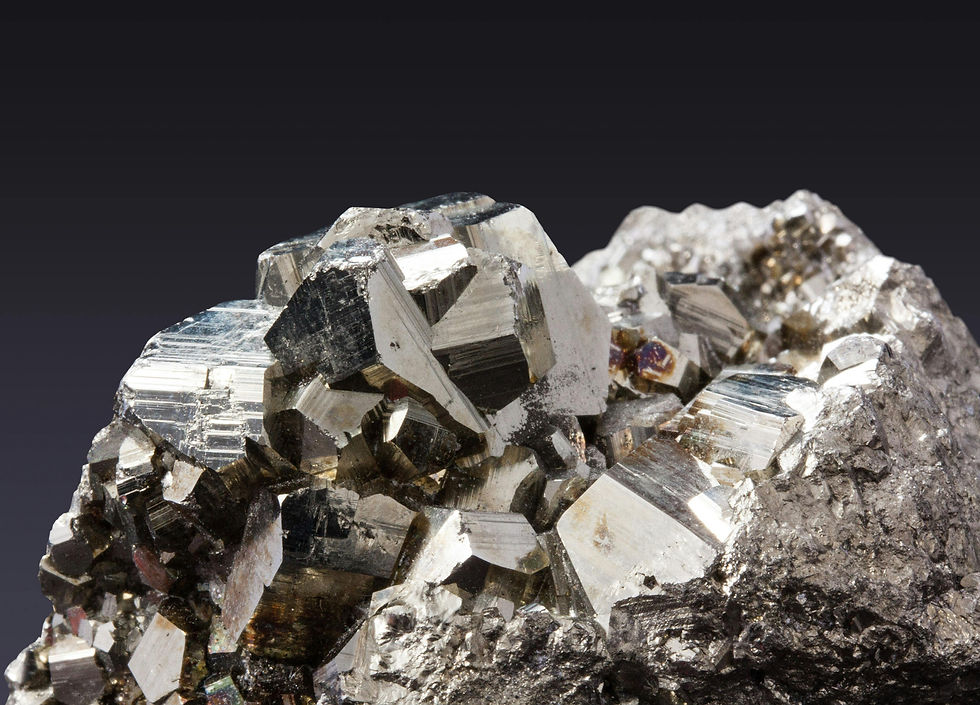Unlocking radiance: Scientifically proven skincare for anti-aging
- Healthfully Myself
- Jan 8, 2024
- 4 min read
Updated: Jan 14, 2024
The pursuit of youthful, radiant skin has fuelled a thriving beauty industry, but separating hype from scientifically proven methods can be a daunting task. This article provides an overview of evidence-based skincare, exploring scientifically validated strategies to combat signs of aging and maintain skin health. Upcoming articles will delve into a comprehensive analysis of each approach.

Before commencing, it should be noted that aging is a multifaceted process influenced by factors such as genetics, lifestyle, and environmental exposures. The skin undergoes structural changes, including collagen and elastin degradation, reduced cell turnover, and increased susceptibility to oxidative stress. The following strategies and ingredients have been proven to help reduce skin aging:
1. Sun protection:
Scientific consensus unequivocally supports the role of sun protection in preventing premature aging (Guan et al., 2021). UV radiation contributes significantly to collagen breakdown and the formation of wrinkles. Daily application of a broad-spectrum sunscreen is essential to shield the skin from harmful UV rays.
2. Retinoids:
Retinoids (vitamin A derivatives), such as retinol and tretinoin, have demonstrated remarkable efficacy in combating signs of aging. Numerous studies have provided evidence supporting the efficacy of retinoids for skin anti-aging. These compounds stimulate collagen production (Zasada & Budzisz, 2019), repair photodamage (Kang & Voorhees, 1998), and improve fine wrinkles, pigmentation, and overall skin texture (Mukherjee et al., 2006). Incorporating a retinoid into your nighttime routine can yield visible improvements over time.
3. Antioxidants:
Antioxidants play an important role in neutralising free radicals, which contribute to oxidative stress and accelerate skin aging (Addor, 2017). Vitamins C and E, coenzyme Q10, and green tea extract are potent antioxidants commonly found in effective anti-aging formulations.
4. Peptides:
Peptides are short chains of amino acids that can signal the skin to produce more collagen. Certain peptides have demonstrated the ability to improve skin texture, firmness, and reduce the appearance of wrinkles (Jeong et al., 2019; Rovero et al., 2022). Look for products containing peptides for targeted anti-aging benefits.
5. Hyaluronic Acid:
As a naturally occurring substance in the skin, hyaluronic acid helps maintain hydration and suppleness. Scientific studies support its efficacy in replenishing moisture (Papakonstantinou et al., 2012), reducing the visibility of fine lines (Bravo et al., 2022), and promoting a plump, youthful complexion (Bravo et al., 2022; Bukhari et al., 2018).
6. Alpha Hydroxy Acids (AHAs) and Beta Hydroxy Acids (BHAs):
AHAs, such as glycolic and lactic acids, and BHAs, like salicylic acid, exfoliate the skin, promoting cell turnover and addressing uneven skin tone. As a result, regular use of these acids can improve the texture and wrinkles (Tran et al., 2014), and pigmentation and photoaging (Kornhauser et al., 2010) of aging skin.
Navigating the plethora of anti-aging skincare options can be overwhelming, but prioritising scientifically proven strategies ensures a more targeted and effective approach. Incorporating sun protection, retinoids, antioxidants, peptides, hyaluronic acid, and exfoliating acids into your skincare routine can contribute to a scientifically supported anti-aging regimen. Remember, consistency is key, and consulting with a dermatologist can provide personalised guidance tailored to your unique skin needs. Embrace the evidence, and let your skin flourish with vitality and resilience.
Addor F. A. S. (2017). Antioxidants in dermatology. Anais Brasilerios de Dermatologia, 92(3), 356–362. https://doi.org/10.1590/abd1806-4841.20175697
Bravo, B., Correia, P., Goncalves Junior, J. E., Sant'Anna, B., & Kerob, D. (2022). Benefits of topical hyaluronic acid for skin quality and signs of skin aging: From literature review to clinical evidence. Dermatologic Therapy, 35(12), e15903.
Bukhari, S. N. A., Roswandi, N. L., Waqas, M., Habib, H., Hussain, F., Khan, S., Sohail, M., Ramli, N. A., Thu, H. E., & Hussain, Z. (2018). Hyaluronic acid, a promising skin rejuvenating biomedicine: A review of recent updates and pre-clinical and clinical investigations on cosmetic and nutricosmetic effects. International Journal of Biological Macromolecules, 120(Pt B), 1682–1695. https://doi.org/10.1016/j.ijbiomac.2018.09.188
Guan, L. L., Lim, H. W., & Mohammad, T. F. (2021). Sunscreens and photoaging: A review of current literature. American Journal of Clinical
Dermatology, 22(6), 819–828. https://doi.org/10.1007/s40257-021-00632-5
Jeong, S., Yoon, S., Kim, S., Jung, J., Kor, M., Shin, K., Lim, C., Han, H. S., Lee, H., Park, K. Y., Kim, J., Chung, H. J., & Kim, H. J. (2019). Anti-wrinkle benefits of peptides complex stimulating skin basement membrane proteins expression. International Journal of Molecular Sciences, 21(1), 73. https://doi.org/10.3390/ijms21010073
Kang, S., & Voorhees, J. J. (1998). Photoaging therapy with topical tretinoin: an evidence-based analysis. Journal of the American Academy of Dermatology, 39(2), S55-S61.
Kornhauser, A., Coelho, S. G., & Hearing, V. J. (2010). Applications of hydroxy acids: classification, mechanisms, and photoactivity. Clinical Cosmetic and Investigational Dermatology, 3, 135–142. https://doi.org/10.2147/CCID.S9042
Mukherjee, S., Date, A., Patravale, V., Korting, H. C., Roeder, A., & Weindl, G. (2006). Retinoids in the treatment of skin aging: an overview of clinical efficacy and safety. Clinical Interventions in Aging, 1(4), 327–348. https://doi.org/10.2147/ciia.2006.1.4.327
Papakonstantinou, E., Roth, M., & Karakiulakis, G. (2012). Hyaluronic acid: A key molecule in skin aging. Dermato-endocrinology, 4(3), 253–258. https://doi.org/10.4161/derm.21923
Rovero, P., Malgapo, D. M. H., Sparavigna, A., Beilin, G., Wong, V., & Lao, M. P. (2022). The clinical evidence-based paradigm of topical anti-aging skincare formulations enriched with bio-active peptide SA1-III (KP1) as collagen modulator: From bench to bedside. Clinical, Cosmetic and Investigational Dermatology, 15, 2693–2703. https://doi.org/10.2147/CCID.S374295
Tran, D., Townley, J. P., Barnes, T. M., & Greive, K. A. (2014). An antiaging skin care system containing alpha hydroxy acids and vitamins improves the biomechanical parameters of facial skin. Clinical, Cosmetic and Investigational Dermatology, 8, 9–17. https://doi.org/10.2147/CCID.S75439
Zasada, M., & Budzisz, E. (2019). Retinoids: active molecules influencing skin structure formation in cosmetic and dermatological treatments. Postepy Dermatologii i Alergologii, 36(4), 392–397. https://doi.org/10.5114/ada.2019.87443






Comments